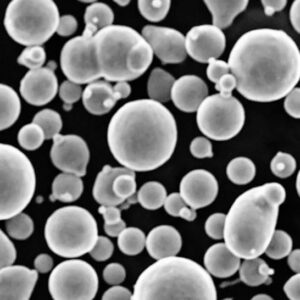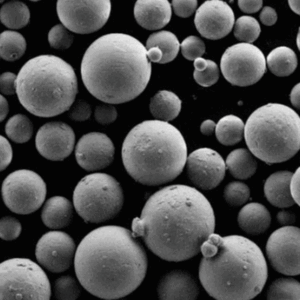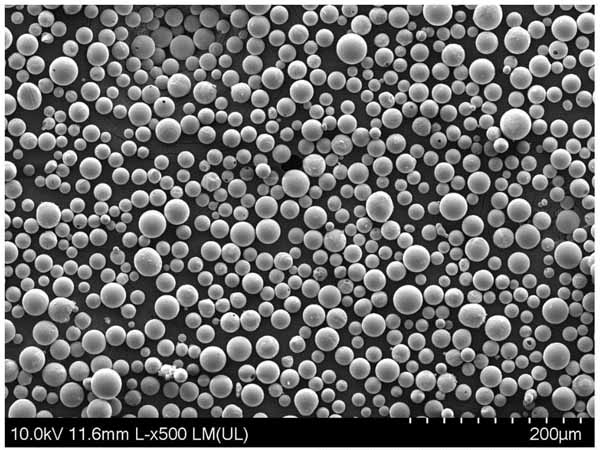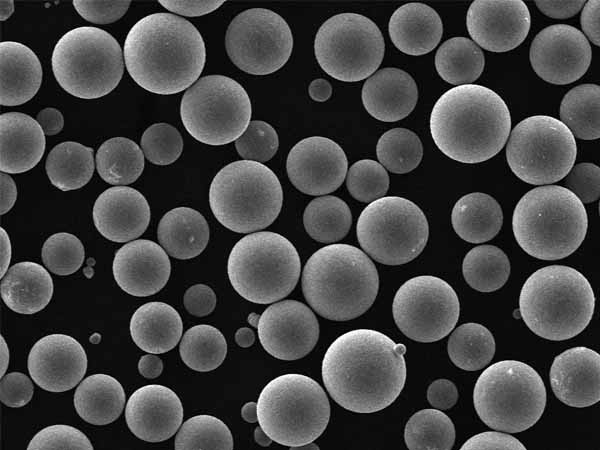Überblick über Metall-Additive Fertigung (MAM)
Die additive Fertigung von Metallen (Metal Additive Manufacturing, MAM) revolutioniert die Fertigungsindustrie, indem sie der Herstellung komplexer Metallteile eine nie dagewesene Flexibilität und Innovation verleiht. Durch den Einsatz fortschrittlicher Technologien wie dem 3D-Druck ermöglicht MAM die Herstellung hochkomplexer und detaillierter Metallteile, die mit herkömmlichen Fertigungsmethoden bisher nicht herstellbar waren. Dieser Artikel taucht tief in die Welt des MAM ein und erforscht seine Verfahren, Materialien, Anwendungen und vieles mehr.
Was ist die Additive Fertigung von Metall?
Im Kern geht es bei der MAM um das schichtweise Hinzufügen von Metallmaterial zum Aufbau eines Endprodukts. Im Gegensatz zur subtraktiven Fertigung, bei der Teile aus einem größeren Materialblock herausgetrennt werden, wird beim MAM nur dort Material hinzugefügt, wo es benötigt wird. Dieses Verfahren reduziert nicht nur den Abfall, sondern ermöglicht auch die Herstellung hochkomplexer Geometrien und leichter Strukturen.
Wie funktioniert MAM?
Das Verfahren beginnt mit einem digitalen 3D-Modell des zu fertigenden Objekts. Dieses Modell wird dann von einer speziellen Software in dünne Schichten zerlegt. Die MAM-Maschine trägt anhand des geschnittenen Modells Metallpulver oder -draht auf und verschmilzt es Schicht für Schicht mit einer Wärmequelle wie einem Laser- oder Elektronenstrahl. Dieser additive Ansatz ermöglicht die Herstellung von Bauteilen mit komplizierten inneren Merkmalen und optimierten Designs für spezifische Anwendungen.

Arten von additiven Fertigungsverfahren für Metall
Es gibt verschiedene Arten von MAM-Verfahren, jedes mit seinen eigenen einzigartigen Fähigkeiten und Anwendungen. Im Folgenden finden Sie eine Zusammenfassung der am häufigsten verwendeten Methoden:
| Prozess-Typ | Beschreibung | Anwendungen | Verwendete Materialien |
|---|---|---|---|
| Selektives Laserschmelzen (SLM) | Verwendet einen Hochleistungslaser zum Schmelzen und Verschmelzen von Metallpulver. | Luft- und Raumfahrt, medizinische Implantate, Automobilindustrie. | Titan, Aluminium, rostfreier Stahl. |
| Elektronenstrahlschmelzen (EBM) | Verwendet einen Elektronenstrahl zum Schmelzen von Metallpulver in einem Vakuum. | Luft- und Raumfahrt, medizinische Implantate. | Titan, Kobalt-Chrom. |
| Direktes Metall-Laser-Sintern (DMLS) | Ähnlich wie SLM, jedoch wird das Metallpulver gesintert, ohne es vollständig zu schmelzen. | Luft- und Raumfahrt, medizinische Implantate, Werkzeugbau. | Titan, Aluminium, rostfreier Stahl. |
| Binder Jetting | Verwendet ein flüssiges Bindemittel, um Metallpulver zu verschmelzen, gefolgt von einer Sinterung. | Prototyping, Kleinserienfertigung. | Rostfreier Stahl, Inconel, Kupfer. |
| Gerichtete Energieabscheidung (DED) | Setzt Metallpulver oder Draht mit Hilfe einer fokussierten Energiequelle ab. | Reparatur, Wartung, Luft- und Raumfahrt. | Titan, Inconel, rostfreier Stahl. |
Zusammensetzung von Metallpulvern in MAM
Für MAM werden verschiedene Metalle und Legierungen verwendet, die jeweils einzigartige Eigenschaften aufweisen und für bestimmte Anwendungen geeignet sind. Hier sind einige der am häufigsten verwendeten Metallpulver:
Übliche Metallpulver für MAM
| Metall-Pulver | Zusammensetzung | Eigenschaften | Anwendungen |
|---|---|---|---|
| Titan (Ti-6Al-4V) | 90% Titan, 6% Aluminium, 4% Vanadium. | Hohe Festigkeit, Korrosionsbeständigkeit, Biokompatibilität. | Luft- und Raumfahrt, medizinische Implantate. |
| Aluminium (AlSi10Mg) | 90% Aluminium, 10% Silizium, 0,5% Magnesium. | Leichtes Gewicht, gute thermische Eigenschaften. | Automobilindustrie, Luft- und Raumfahrt. |
| Rostfreier Stahl (316L) | Eisen, 16-18% Chrom, 10-14% Nickel, 2-3% Molybdän. | Korrosionsbeständigkeit, hohe Duktilität. | Medizin, Lebensmittelverarbeitung, Schifffahrt. |
| Inconel (718) | Nickel, 50-55% Nickel, 17-21% Chrom, 2,8-3,3% Molybdän. | Hohe Temperaturbeständigkeit, Korrosionsbeständigkeit. | Luft- und Raumfahrt, Gasturbinen. |
| Kobalt-Chrom (CoCr) | 55-65% Kobalt, 26-30% Chrom, 5-7% Molybdän. | Abriebfestigkeit, Biokompatibilität. | Medizinische Implantate, Zahnimplantate. |
| Werkzeugstahl (H13) | Eisen, 0,32-0,45% Kohlenstoff, 4,75-5,5% Chrom, 1,1-1,8% Molybdän. | Hohe Härte, Verschleißfestigkeit. | Werkzeuge, Gussformen, Matrizen. |
| Kupfer (Cu) | 99.9% Kupfer. | Ausgezeichnete thermische und elektrische Leitfähigkeit. | Elektronik, Wärmetauscher. |
| Martensitaushärtender Stahl (MS1) | Eisen, 18% Nickel, 8% Kobalt, 5% Molybdän. | Hohe Festigkeit und Zähigkeit. | Luft- und Raumfahrt, Werkzeugbau. |
| Nickellegierung (HX) | 47% Nickel, 22% Chrom, 18% Eisen. | Hohe Temperaturbeständigkeit, Oxidationsbeständigkeit. | Luft- und Raumfahrt, chemische Verarbeitung. |
| Wolfram (W) | 99.95% Wolfram. | Hohe Dichte, hoher Schmelzpunkt. | Luft- und Raumfahrt, Verteidigung. |
Merkmale der additiven Fertigung von Metallen
Die additive Fertigung von Metallen weist mehrere einzigartige Merkmale auf, die sie von den herkömmlichen Fertigungsverfahren unterscheiden. Hier ein genauerer Blick auf einige der wichtigsten Eigenschaften:
Präzision und Komplexität
MAM ermöglicht die Herstellung hochkomplexer Geometrien mit komplizierten inneren Merkmalen, die mit herkömmlichen Methoden oft nicht zu erreichen sind. Diese Präzision ermöglicht die Herstellung von Komponenten, die sowohl leicht als auch stabil sind und die Leistung in kritischen Anwendungen optimieren.
Materialeffizienz
Einer der herausragenden Vorteile von MAM ist seine Fähigkeit, den Materialabfall zu minimieren. Da MAM nur dort Material hinzufügt, wo es benötigt wird, wird der während des Herstellungsprozesses anfallende Ausschuss erheblich reduziert. Diese Effizienz senkt nicht nur die Materialkosten, sondern trägt auch zu einer nachhaltigeren Produktionsweise bei.
Personalisierung
Mit MAM ist es möglich, maßgeschneiderte Teile zu erstellen, die auf spezifische Bedürfnisse zugeschnitten sind. Dies ist besonders in Branchen wie dem Gesundheitswesen von Vorteil, wo patientenspezifische Implantate auf der Grundlage individueller anatomischer Daten hergestellt werden können. Die Flexibilität von MAM unterstützt auch das Rapid Prototyping, was schnellere Designiterationen und Innovationen ermöglicht.
Reduzierte Vorlaufzeiten
Die herkömmliche Fertigung ist oft mit langen Vorlaufzeiten verbunden, da Werkzeuge und Formen hergestellt werden müssen. MAM umgeht diese Schritte und ermöglicht eine schnellere Produktion vom digitalen Entwurf bis zum fertigen Teil. Diese Verkürzung der Vorlaufzeiten beschleunigt die Produktentwicklungszyklen und die Zeit bis zur Markteinführung.
-
 AlCr Powder
AlCr Powder -
 Aluminium Copper Alloy Powder
Aluminium Copper Alloy Powder -
 Ti6242 Titanlegierungspulver
Ti6242 Titanlegierungspulver -
 Carbonyl-Eisen-Pulver (CIP)
Carbonyl-Eisen-Pulver (CIP) -
 Kovar Fe-Ni-Co kugelförmiges Pulver
Kovar Fe-Ni-Co kugelförmiges Pulver -
 Pulver aus FeCoNi-Legierung mit hoher Entropie
Pulver aus FeCoNi-Legierung mit hoher Entropie -
 FeCoNiCrMo und FeCoNiCrMo0.5 Pulver aus hochentropischer Legierung
FeCoNiCrMo und FeCoNiCrMo0.5 Pulver aus hochentropischer Legierung -
 F55 (Alloy 100) Superduplex-Edelstahlpulver
F55 (Alloy 100) Superduplex-Edelstahlpulver -
 Hochmanganstahl-Pulver
Hochmanganstahl-Pulver
Vorteile der Additiven Fertigung von Metallen
Die Vorteile von MAM sind zahlreich und wirken sich in verschiedenen Branchen aus. Hier sind einige der wichtigsten Vorteile:
Gestaltungsfreiheit
MAM bietet eine beispiellose Designfreiheit, die es Ingenieuren ermöglicht, innovative Geometrien und Strukturen zu erforschen. Diese Freiheit ermöglicht die Herstellung von Teilen mit optimierten Leistungsmerkmalen, wie z. B. Gitterstrukturen, die das Gewicht reduzieren, ohne die Festigkeit zu beeinträchtigen.
Kosteneinsparungen
Durch die Reduzierung des Materialabfalls und den Wegfall teurer Werkzeuge kann MAM zu erheblichen Kosteneinsparungen führen. Außerdem lassen sich durch die Möglichkeit, komplexe Teile in einem einzigen Arbeitsgang herzustellen, die Montagezeit und die damit verbundenen Kosten reduzieren.
Verbesserte Leistung
Mit MAM hergestellte Komponenten weisen aufgrund ihres optimierten Designs und ihrer hochwertigen Materialeigenschaften oft eine höhere Leistung auf. So können beispielsweise Teile mit internen Kühlkanälen konstruiert oder auf Gewichtsreduzierung optimiert werden, was zu einer verbesserten Effizienz und Funktionalität führt.
Nachhaltigkeit
MAM trägt zu nachhaltigeren Fertigungspraktiken bei, indem es Abfälle minimiert und die Umweltauswirkungen der Produktion verringert. Die Möglichkeit, Teile auf Abruf zu produzieren, reduziert auch den Bedarf an Lagerbeständen und trägt damit weiter zur Nachhaltigkeit bei.
Rapid Prototyping und Produktion
Die Geschwindigkeit und Flexibilität von MAM machen es ideal für Rapid Prototyping und Kleinserienproduktion. Diese Fähigkeit ermöglicht es Unternehmen, Designs schnell zu testen und zu iterieren, was die Innovation beschleunigt und die Zeit bis zur Markteinführung verkürzt.
Anwendungen der Additiven Fertigung von Metallen
Die additive Fertigung von Metallen findet in einer Vielzahl von Branchen Anwendung. Hier ein Blick auf einige der wichtigsten Branchen, die von dieser Technologie profitieren:
Luft- und Raumfahrt
Die Luft- und Raumfahrtindustrie hat MAM aufgrund ihres Bedarfs an leichten, hochfesten Bauteilen schon früh eingesetzt. MAM ermöglicht die Herstellung komplexer Teile wie Treibstoffdüsen, Turbinenschaufeln und Strukturbauteile und verbessert die Leistung und Treibstoffeffizienz.
Medizin und Zahnmedizin
Im medizinischen Bereich wird MAM zur Herstellung von maßgeschneiderten Implantaten, Prothesen und chirurgischen Instrumenten verwendet. Patientenspezifische Implantate, wie z. B. Hüft- und Knieprothesen, können auf der Grundlage individueller anatomischer Daten hergestellt werden, wodurch Passform und Funktion verbessert werden. In der Zahnmedizin ermöglicht MAM die Herstellung von Kronen, Brücken und kieferorthopädischen Geräten mit hoher Präzision.
Automobilindustrie
Die Automobilindustrie nutzt MAM für die Herstellung von leichten, leistungsstarken Teilen. Zu den Anwendungen gehören Motorkomponenten, Abgassysteme und Strukturteile. Die Fähigkeit, komplexe Geometrien und leichte Strukturen herzustellen, trägt zur Verbesserung der Kraftstoffeffizienz und Leistung bei.
Energie
Im Energiesektor wird MAM zur Herstellung von Komponenten für Gasturbinen, Kernreaktoren sowie für die Öl- und Gasexploration eingesetzt. Die Technologie ermöglicht die Herstellung von Teilen mit optimierten Kühlkanälen und verbesserten Materialeigenschaften, was die Effizienz und Haltbarkeit erhöht.
Werkzeugbau und Fertigung
MAM wird auch zur Herstellung von Werkzeugen und Fertigungshilfsmitteln wie Formen, Gesenken und Vorrichtungen verwendet. Die Möglichkeit, komplexe Geometrien zu erstellen und konforme Kühlkanäle einzubauen, verbessert die Leistung und Lebensdauer dieser Werkzeuge.
Verteidigung
Die Verteidigungsindustrie profitiert von MAM durch die Herstellung von leichten, hochfesten Komponenten für Militärfahrzeuge, Flugzeuge und Waffen. Die Technologie ermöglicht die schnelle Produktion von Teilen an entlegenen Orten und unterstützt damit missionskritische Anwendungen.
Spezifikationen, Größen, Güteklassen und Normen in MAM
Die additive Fertigung von Metallen umfasst eine Vielzahl von Spezifikationen, Größen, Güten und Normen, um die Qualität und Leistung der hergestellten Teile zu gewährleisten. Hier finden Sie einen detaillierten Überblick über diese Aspekte:
Spezifikationen von MAM Metallpulvern
| Metall-Pulver | Partikelgröße (µm) | Reinheit (%) | Dichte (g/cm³) | Standard |
|---|---|---|---|---|
| Titan (Ti-6Al-4V) | 15-45 | 99.5 | 4.43 | ASTM F2924 |
| Aluminium (AlSi10Mg) | 20-63 | 99.7 | 2.68 | ASTM F3318 |
| Rostfreier Stahl (316L) | 15-45 | 99.9 | 7.99 | ASTM F3184 |
| Inconel (718) | 15-53 | 99.5 | 8.19 | ASTM F3055 |
| Kobalt-Chrom (CoCr) | 10-45 | 99.9 | 8.3 | ASTM F75 |
| Werkzeugstahl (H13) | 15-45 | 99.5 | 7.8 | ASTM A681 |
| Kupfer (Cu) | 10-45 | 99.9 | 8.96 | ASTM B216 |
| Martensitaushärtender Stahl (MS1) | 10-45 | 99.9 | 8.0 | ASTM A579 |
| Nickellegierung (HX) | 10-45 | 99.8 | 8.24 | ASTM B435 |
| Wolfram (W) | 15-45 | 99.95 | 19.3 | ASTM B777 |
Anwendungen und Einsatzmöglichkeiten von MAM Metallpulvern
| Industrie | Anmeldung | Beispiel Teile | Vorteile |
|---|---|---|---|
| Luft- und Raumfahrt | Strukturelle Komponenten | Kraftstoffdüsen, Turbinenschaufeln | Leichtes Gewicht, hohe Festigkeit |
| Medizinische | Implantate | Hüftprothesen, Zahnkronen | Personalisierung, Biokompatibilität |
| Automobilindustrie | Komponenten des Motors | Kolben, Auspuffanlagen | Gewichtsreduzierung, Leistung |
| Energie | Komponenten der Turbine | Gasturbinenschaufeln | Effizienz, Langlebigkeit |
| Werkzeugbau | Fertigungshilfsmittel | Gussformen, Matrizen | Leistung, Langlebigkeit |
| Verteidigung | Militärische Komponenten | Fahrzeugteile, Waffen | Leichtigkeit, Stärke |
Lieferanten und Preisgestaltung von MAM Metallpulvern
Der Markt für MAM-Metallpulver ist sehr vielfältig, und es gibt zahlreiche Anbieter, die eine Reihe von Materialien anbieten. Hier ein Blick auf einige wichtige Anbieter und Preisangaben:
Hauptlieferanten und Preisangaben
| Anbieter | Metall-Pulver | Preis pro kg | MOQ (Mindestbestellmenge) |
|---|---|---|---|
| Höganäs AB | Titan (Ti-6Al-4V) | $300 | 10 kg |
| Sandvik | Aluminium (AlSi10Mg) | $100 | 5 kg |
| Tischlertechnik | Rostfreier Stahl (316L) | $80 | 10 kg |
| LPW-Technologie | Inconel (718) | $400 | 10 kg |
| Oerlikon | Kobalt-Chrom (CoCr) | $350 | 5 kg |
| EOS GmbH | Werkzeugstahl (H13) | $90 | 10 kg |
| GE-Zusatzstoff | Kupfer (Cu) | $70 | 5 kg |
| Renishaw | Martensitaushärtender Stahl (MS1) | $120 | 10 kg |
| AP&C | Nickellegierung (HX) | $450 | 5 kg |
| HC Starck | Wolfram (W) | $1000 | 5 kg |
Vor- und Nachteile der Additiven Fertigung von Metall
Die additive Fertigung von Metallen bietet eine Reihe von Vorteilen und Einschränkungen. Hier ist ein detaillierter Vergleich:
Vorteile und Beschränkungen von MAM
| Vorteile | Beschränkungen |
|---|---|
| Flexibilität bei der Gestaltung | Materielle Beschränkungen |
| MAM ermöglicht komplexe Geometrien und komplizierte Designs. | Beschränkt auf bestimmte Metallpulver und -legierungen. |
| Reduzierter Abfall | Hohe Anfangskosten |
| Minimaler Materialabfall im Vergleich zu herkömmlichen Methoden. | Hohe Kosten für Ausrüstung und Material. |
| Personalisierung | Nachbearbeitungsanforderungen |
| Fähigkeit zur Herstellung kundenspezifischer Teile für spezifische Anwendungen. | Erfordert oft zusätzliche Nachbearbeitungsprozesse. |
| Schnelles Prototyping | Größenbeschränkungen |
| Schnelle Herstellung von Prototypen und Kleinserien. | Begrenzt durch das Bauvolumen der MAM-Maschinen. |
| Verbesserte Leistung | Qualitätskontrolle |
| Die Teile können für bestimmte Leistungsmerkmale optimiert werden. | Erfordert eine strenge Qualitätskontrolle und -prüfung. |

FAQ
| Frage | Antwort |
|---|---|
| Was ist Metall-Additive Fertigung (MAM)? | MAM ist ein Verfahren, bei dem Metallteile Schicht für Schicht anhand eines digitalen Modells und einer Wärmequelle aufgebaut werden, um Metallpulver oder Draht zu verschmelzen. |
| Was sind die Vorteile von MAM? | Zu den Vorteilen gehören Designflexibilität, weniger Abfall, individuelle Anpassung, schnelles Prototyping und verbesserte Leistung. |
| Welche Arten von Metallpulvern werden bei MAM verwendet? | Zu den gängigen Metallpulvern gehören Titan, Aluminium, Edelstahl, Inconel, Kobalt-Chrom, Werkzeugstahl, Kupfer, Maraging-Stahl, Nickellegierungen und Wolfram. |
| Welche Branchen nutzen MAM? | Branchen wie Luft- und Raumfahrt, Medizintechnik, Automobilbau, Energie, Werkzeugbau und Verteidigung nutzen MAM in großem Umfang. |
| Was sind die Grenzen von MAM? | Zu den Einschränkungen gehören hohe Anschaffungskosten, Materialbeschränkungen, Nachbearbeitungsbedarf, Größenbeschränkungen und Probleme bei der Qualitätskontrolle. |
| Wie reduziert MAM den Abfall? | MAM fügt nur dort Material hinzu, wo es benötigt wird, wodurch der Ausschuss minimiert und der Materialverbrauch insgesamt reduziert wird. |
| Kann MAM kundenspezifische Teile herstellen? | Ja, MAM zeichnet sich durch die Herstellung kundenspezifischer Teile aus, die auf spezifische Anforderungen zugeschnitten sind, was insbesondere bei medizinischen und zahnmedizinischen Anwendungen von Vorteil ist. |
| Was ist der Unterschied zwischen SLM und DMLS? | Sowohl SLM als auch DMLS verwenden Laser, um Metallpulver zu verschmelzen, aber SLM schmilzt das Pulver vollständig, während DMLS es sintert, ohne es vollständig zu schmelzen. |
| Was ist die typische Vorlaufzeit für MAM-Teile? | Die Vorlaufzeiten für MAM-Teile können erheblich kürzer sein als bei herkömmlichen Verfahren und liegen oft zwischen einigen Tagen und einigen Wochen. |
| Was sind die wichtigsten Faktoren, die bei der Auswahl eines Metallpulvers für MAM zu beachten sind? | Zu den wichtigsten Faktoren gehören die Materialeigenschaften, die Kompatibilität mit dem MAM-Verfahren, die Anwendung der Teile und die Kosten. |
Schlussfolgerung
Metal Additive Manufacturing (MAM) ist eine transformative Technologie, die erhebliche Vorteile gegenüber herkömmlichen Fertigungsmethoden bietet. Mit ihrer Fähigkeit, komplexe, leistungsstarke Teile effizient und nachhaltig zu produzieren, ist MAM in der Lage, Innovationen in einer Vielzahl von Branchen voranzutreiben. Ob in der Luft- und Raumfahrt, der Medizintechnik, der Automobilindustrie oder in einem anderen Sektor - das Potenzial von MAM, Fertigungsprozesse und Produktdesigns zu revolutionieren, ist immens. Wenn Unternehmen die verschiedenen Prozesse, Materialien und Anwendungen verstehen, können sie das volle Potenzial von MAM ausschöpfen, um neue Leistungs- und Effizienzniveaus zu erreichen.





